If the recent spike in grocery prices and issues with our food supply chain have shown us anything, it's that it's probably a good idea to keep some nonperishable food around the house in case of any type of shortage or emergencies. Personally, knowing that my family and I would be able to sustain ourselves through tough times is a comforting feeling. I have found one of the best ways to preserve food for the long term is by freeze-drying it, and you don't have to wait for the apocalypse to enjoy freeze-dried foods.
Since freeze-drying preserves all the flavor and nutrients while also (obviously) removing all the moisture, using freeze-dried fruits and vegetables in both sweet and savory cooking is easier than you may think. Canning and dehydrating food without freezing affects the way the food tastes; it changes the color and reduces the nutritional value by about half.
Freeze-dried foods, by contrast, retain their food value and can be stored in the refrigerator, pantry, or cellar for up to 25 years. They are lightweight and easy to transport for easy camping meals or an emergency food supply. Interested in learning how to do this? Keep reading as we show you how to freeze-dry food.
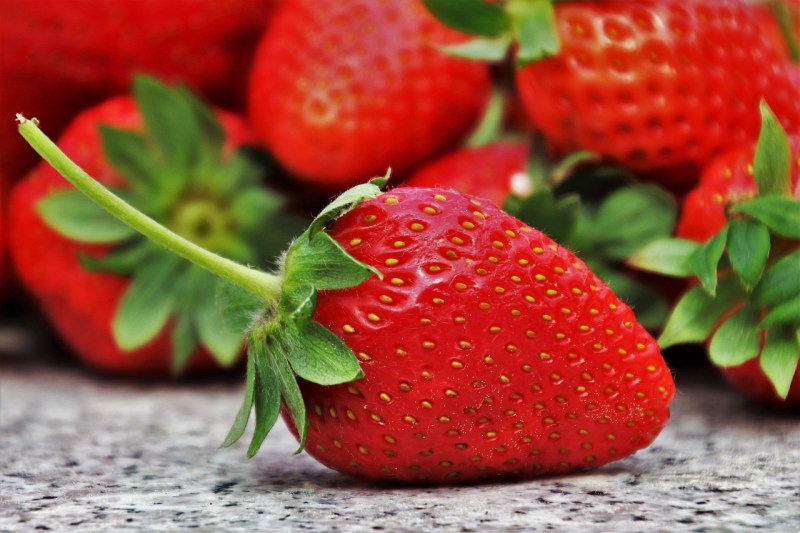
Preparing food for freeze-drying
Before freeze-drying your food, be sure to pick the freshest options. Wash your food to remove any particles, dirt, and contaminants. Then, cut the food into small pieces or chunks to facilitate the elimination of moisture. You can, however, also freeze-dry food and even complete meals that have already been cooked.
Once you have prepared the food, you can begin the freeze-drying process and we've put together a guide to some of the most popular ways of freeze-drying food.
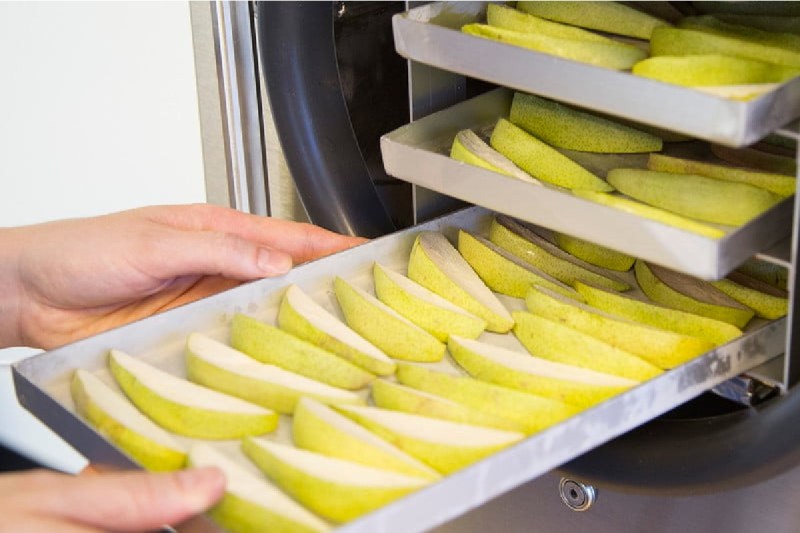
How to freeze dry food in a freeze-dryer
If you can afford a freeze-dryer, then it’s a great option, as it is a machine purposely designed for freeze-drying. There are plenty of options out there, so be sure to pick a dryer that makes economic sense. The good thing about these dryers is that they come with several trays for different foods.
Step 1: Place your foods in the trays — ensure the food doesn’t exceed the tray’s height.
Step 2: Place the trays in the dryer and close the doors (Some models have two doors).
Step 3: Freeze the food at -40 to -50 degrees Fahrenheit.
Step 4: Allow 24 hours for the process to complete.
Step 5: Once complete, place the food in mylar bags and seal them up.
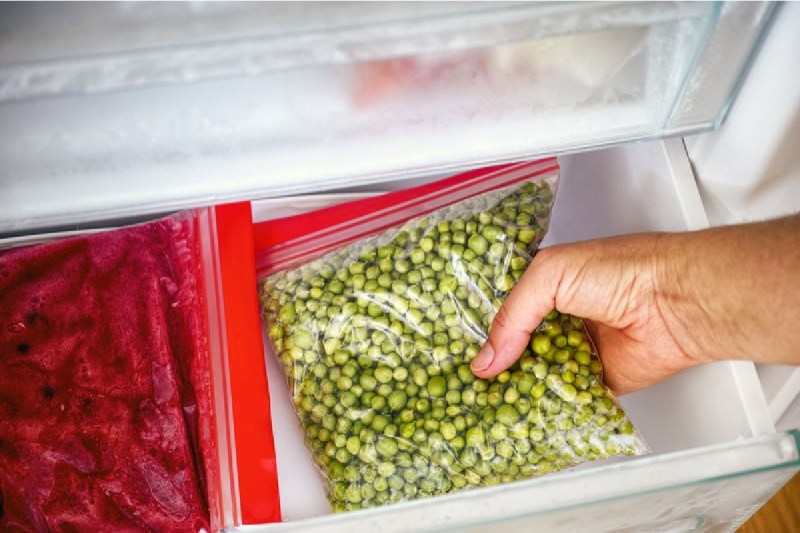
How to freeze dry food in a freezer
A home freezer makes it easier for people who want to freeze-dry food for the first time. If you have a deep freezer, it makes an even better option. But your typical home freezer will still work.
Step 1: Place the food on a tray or plate after spreading the food out.
Step 2: Place the tray in the freezer — the food needs to be frozen at the lowest temperature.
Step 3: Allow the food to stay in the freezer until it’s completely freeze-dried — two to three weeks.
Step 4: Once the process is complete, pack it in an airtight storage bag and store it in your freezer or pantry.
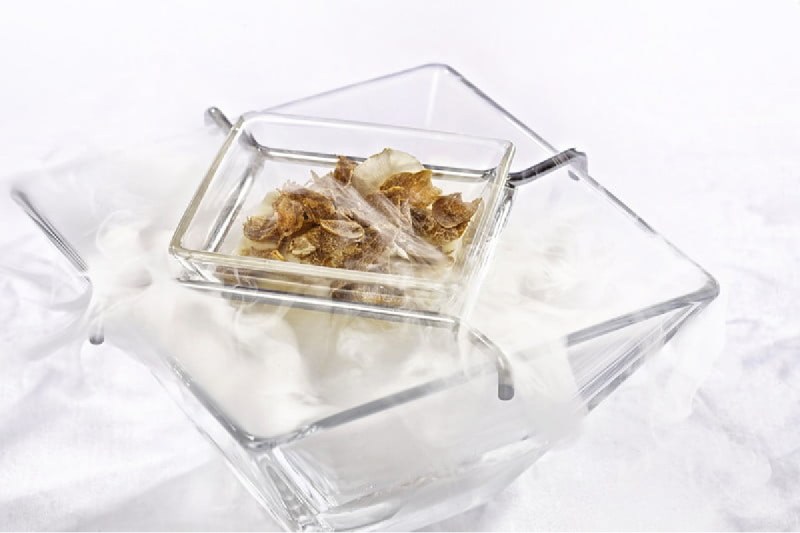
How to freeze-dry food with dry ice
Using dry ice to freeze-dry is much faster than using the freezer. This is because dry ice evaporates moisture from the food quickly.
Step 1: Pack the food in freezer-safe bags.
Step 2: Place the bags in a cooler.
Step 3: Completely cover the bags with dry ice and leave it for about 24 hours.
Step 4: Once the food is completely freeze-dried, remove the bags and store them.
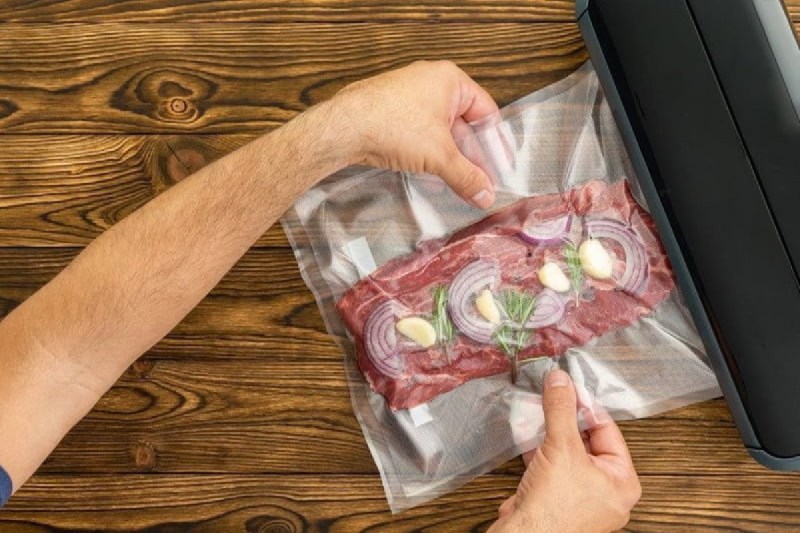
How to freeze dry food with a vacuum chamber
While this is the most efficient method, it is also expensive. You’ll need a special vacuum chamber to freeze-dry your food. The chambers are designed to speed up the freeze-drying process.
Step 1: Spread the food on a tray or plate without clumping it together.
Step 2: Freeze the food until solid in a freezer.
Step 3: Place the food in the chamber at around 120 m Torr and set the temperature to 10 degrees Celsius.
Step 4: Allow the food to stay in the chamber for at least a week for optimal sublimation.
Step 5: Once the process is complete, put the food in air-tight containers for storage.
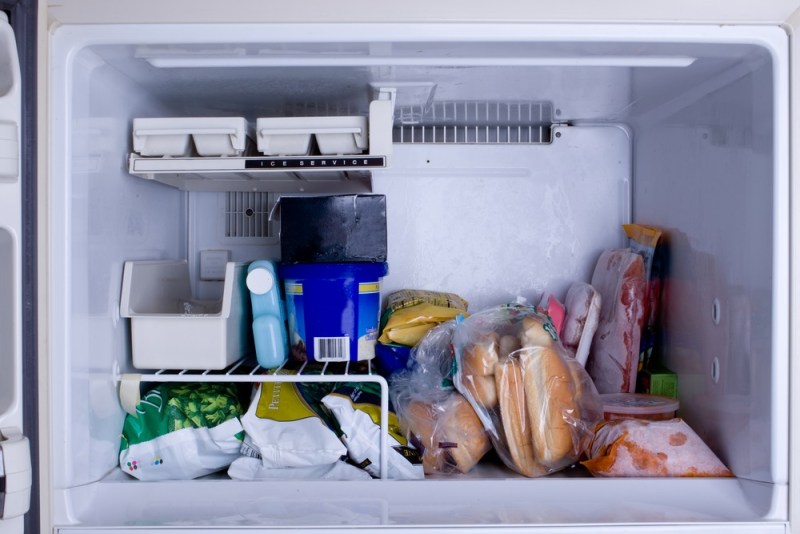
How can I check if my freeze-dried food is done?
While freeze-drying foods is a great way to prepare them for long-term storage, if the process is not properly done, the foods could still retain some mosture, which could allow bacteria to grow and spoil the food. According to the University of Minnesota Externsion's website, "when done correctly, freeze-drying does not allow the ice crystals to melt to the liquid state before being vaporized to gas. The ice crystals are removed quickly and in a way that the cell walls are not damaged. This promotes the quality and safety of the final food product."
According to the university's website, there is a simple method to check if your food has been properly freeze-dried.
- Once you think the food is ready, take a piece from each tray. It's important to do this since the temperature could vary inside the equipment you're using and you want to make sure each tray is done.
- Cut each sample in half and look to see if there are any dark spots inside. Dark spots are an indication of moisture, which means the food is not done freeze-drying.
- If you see a dark spot, put all the trays back and continue the freeze-drying process.
FAQs:
1. Can you freeze-dry food at home?
Yes, you can freeze-dry food at home if you know how to do it. You can use a freeze-dryer, freezer, dry ice, or a vacuum chamber to freeze-dry your food. Simply follow the steps provided above to freeze-dry your food for future use. Freeze-drying at home is much less costly than using commercial services. If it’s your first time to freeze-dry food, start with simple food options such as apples, bananas, and berries. Vegetables like peppers and broccoli are also great for practicing on — you can then try other types of foods when you’re confident with the results. Bear in mind that properly frozen food doesn’t change color.
2. How long does it take to freeze dry food?
Depending on the method you’re using, it takes 20 hours to a month to freeze-dry your food. Also, it depends on the type of food you’re freeze-drying. For example, foods such as corn, meat, and peas dry quickly, while watermelon and squash take longer. The thickness of the food slices will affect the freeze-drying time, too. If you have a freeze-dryer, it takes about 20 to 40 hours. But this freeze-drying equipment is quite costly for home use. Most effective dryers cost between $2,000 to $5,000, although there are some options below $2,000. Using a standard freezer is the cheapest option, but it can take up to a month to freeze-dry your food properly. Using dry ice is a quick option, too, but it takes a little more work than using a standard freezer.
3. What foods cannot be freeze-dried?
This food preservation technique works great for vegetables and fruits, but you’re not limited to them only. You can also freeze-dry desserts, meats, dairy, and cooked meals. However, there are foods that you shouldn’t freeze dry. This includes honey, butter, jam, syrup, pure chocolate, and peanut butter.
4. How do you freeze-dry fruit at home without a machine?
If you don’t have a freeze-dryer, a home freezer and dry ice are accessible options to most homeowners. Be sure to follow the steps we have shared above to freeze-dry your foods using these methods. When you use these methods, remember to test your foods before storing them.
5. How do you rehydrate freeze-dried meals?
While some freeze-dried foods can be eaten frozen, others like meat and vegetables will need to be rehydrated first. You simply need to place your meat in warm or hot water to rehydrate it — this will take several minutes. For vegetables, you can just sprinkle them with some water. And of course, you also can eat them just the way they are.



